751
Familiar to us all appliances at the beginning of its appearance
Did you know that 100 years ago, one of the brothers who founded the infamous company Philips, Gerard Philips and his friend began to develop technology for electric bulbs, which later evolved into the world's first lamp with a filament that runs on electricity. Later, the company invented radios, televisions, audio tapes and discs, but let's not get ahead of ourselves, and see everything in order. Lamps
Its business, Philips started with the production of incandescent light bulbs, which are in the early XX century were most fashionable technical novelty than an everyday household appliance. In 1913 began the production of lamps Halfwatt, it features a spiral of tungsten and use of the gas inside the bulb. However, it did not become mass, and two years later the company released its increasingly popular smaller version - the lamp Arga. The name she received by her use of the inert gas argon, reduces the rate of evaporation of a metal filament.

In 1933, it was released one of the first modern light bulbs Bi-Arlita densified double helix. This has greatly increased life of the lights. They were used in place of the inert gas vapors sodium because of which the glow turned yellow-orange. Therefore these lamps are mainly used for street lighting, common areas, but not in a residential area.

In the future, the improvement of the lights continued, there were already well known to us fluorescent lamps, as manufacturers competed in their economy, ecology and so on. Plus, Philips apart from its development in the late XX century pleased here such advertising.

Radios
Philips has first radio in 1927 and appearance looked more like a gramophone speaker. He worked only in the UHF range, and during the test was able to send an audio message on the short waves on record distance - from the Netherlands to Indonesia (then - Dutch East Indies).

Several years later, on sale popular model then receiver Chapel, which is by design looked very futuristic. However, Chapel was much closer to the modern ideas on domestic radio, the progenitor of the current audio technology it is easy to guess.
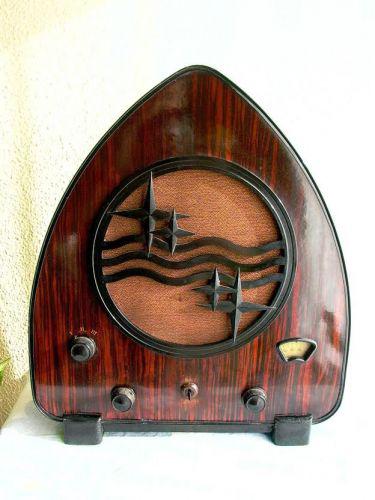
Later, the company developed and other areas - the radio for vehicles, portable receivers, and even Boomboxes radio, built-in refrigerator.
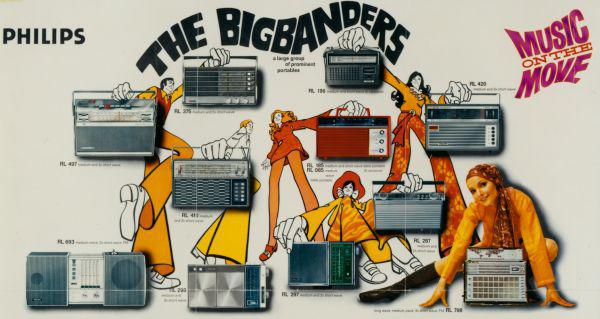
Televisions
Along with the radio started the development of the first Philips TV. Initially, the foundation was laid Nipkow disk, named after the German inventor, who lived in the XIX-XX centuries. This allows both the mechanical device to scan and reproduce an image line by line. In 1928, the world saw the first television Philips, showing a picture of the 48 lines on the tiny screen.
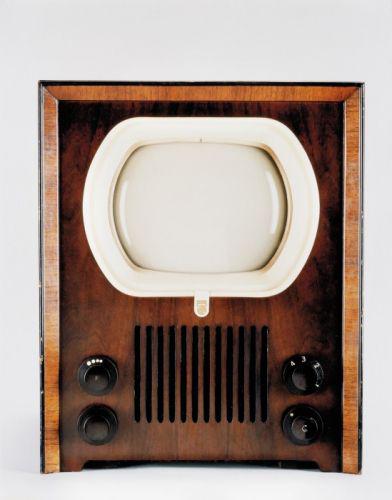
In the early 1960s, the company introduced its first color TV. Curiously, he started first sold abroad - in North America, where earlier than in Europe, launched a color television.
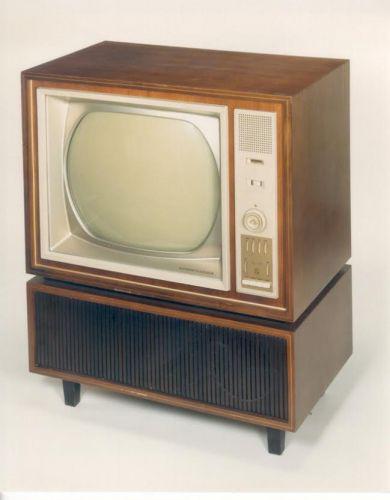
Audio cassettes and CD
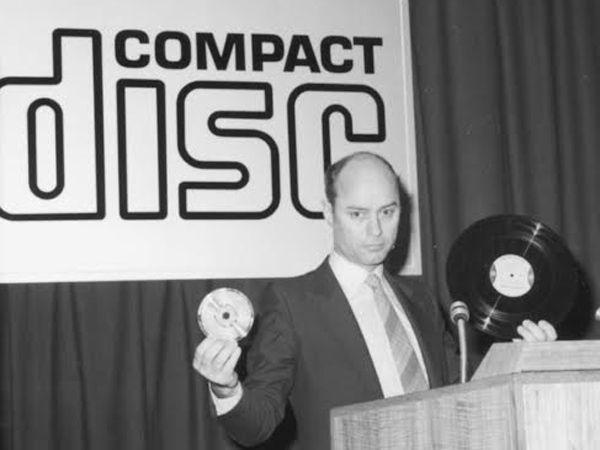
In 1963 the company launched the world's first compact audio cassette with a magnetic tape, which essentially become the standard. Cassettes have not changed its appearance for decades and are familiar to most people living today. Along with them there, and tape recorders, radios, tape recorders and other related contemporary Audio. Later this technology was used for video recording.
Another revolution in the recording and storage of information occurred in early 1980, when Philips together with Sony introduced the first CD. First of all, compared with the then popular gram plates hit a radically smaller carrier. Curiously, when it only had enough for 60 minutes of music, but over time the technology was improved several times. This innovation has also become a global standard.

Small appliances
In 1939 there was the world's first electric shaver with rotating heads - Philishave. According to one version, they were originally a by-product from the production of incandescent light bulbs. However zealous engineers figured out how to put them into the case.

Beginning in the 1950s, following a consumer boom in Western countries, the company is actively involved in the competition for the issuance of home appliances. Irons, refrigerators, washing machines, and compact grinder appeared in millions of households.

Source: www.rg.ru
Its business, Philips started with the production of incandescent light bulbs, which are in the early XX century were most fashionable technical novelty than an everyday household appliance. In 1913 began the production of lamps Halfwatt, it features a spiral of tungsten and use of the gas inside the bulb. However, it did not become mass, and two years later the company released its increasingly popular smaller version - the lamp Arga. The name she received by her use of the inert gas argon, reduces the rate of evaporation of a metal filament.

In 1933, it was released one of the first modern light bulbs Bi-Arlita densified double helix. This has greatly increased life of the lights. They were used in place of the inert gas vapors sodium because of which the glow turned yellow-orange. Therefore these lamps are mainly used for street lighting, common areas, but not in a residential area.

In the future, the improvement of the lights continued, there were already well known to us fluorescent lamps, as manufacturers competed in their economy, ecology and so on. Plus, Philips apart from its development in the late XX century pleased here such advertising.

Radios
Philips has first radio in 1927 and appearance looked more like a gramophone speaker. He worked only in the UHF range, and during the test was able to send an audio message on the short waves on record distance - from the Netherlands to Indonesia (then - Dutch East Indies).

Several years later, on sale popular model then receiver Chapel, which is by design looked very futuristic. However, Chapel was much closer to the modern ideas on domestic radio, the progenitor of the current audio technology it is easy to guess.

Later, the company developed and other areas - the radio for vehicles, portable receivers, and even Boomboxes radio, built-in refrigerator.

Televisions
Along with the radio started the development of the first Philips TV. Initially, the foundation was laid Nipkow disk, named after the German inventor, who lived in the XIX-XX centuries. This allows both the mechanical device to scan and reproduce an image line by line. In 1928, the world saw the first television Philips, showing a picture of the 48 lines on the tiny screen.

In the early 1960s, the company introduced its first color TV. Curiously, he started first sold abroad - in North America, where earlier than in Europe, launched a color television.

Audio cassettes and CD

In 1963 the company launched the world's first compact audio cassette with a magnetic tape, which essentially become the standard. Cassettes have not changed its appearance for decades and are familiar to most people living today. Along with them there, and tape recorders, radios, tape recorders and other related contemporary Audio. Later this technology was used for video recording.
Another revolution in the recording and storage of information occurred in early 1980, when Philips together with Sony introduced the first CD. First of all, compared with the then popular gram plates hit a radically smaller carrier. Curiously, when it only had enough for 60 minutes of music, but over time the technology was improved several times. This innovation has also become a global standard.

Small appliances
In 1939 there was the world's first electric shaver with rotating heads - Philishave. According to one version, they were originally a by-product from the production of incandescent light bulbs. However zealous engineers figured out how to put them into the case.

Beginning in the 1950s, following a consumer boom in Western countries, the company is actively involved in the competition for the issuance of home appliances. Irons, refrigerators, washing machines, and compact grinder appeared in millions of households.

Source: www.rg.ru























